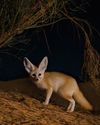Seashell Secrets
BBC Wildlife
|July 2022
Heading to the seaside this summer? Take a moment to admire the intricate shape and form of seashells, which reveal so much about their mysterious former inhabitants.

Go to the seaside and escape between the tides. Get sandy toes, listen to the waves - and always, always look for seashells.
A day at the beach isn’t complete without a sandcastle decorated with these marine treasures, or a few in the pocket to bring home. Adorning bathroom shelves and windowsills, seashells are not only fond reminders of a visit to the sea, but they have many secrets to share and stories to tell about the animals that made them and the wonders of their watery world. Any shell, after all, was once part of a living, breathing sea creature. Learn to decipher these hidden messages and you’ll start to see seashells in a whole new light.
Every time you pick up an empty seashell, you’re holding a mollusc’s abandoned exoskeleton, which these soft-bodied animals use as a multi-purpose tool. This is their home, their place to hide, and the attachment point for muscles to help them move. There’s a plethora of shells to find, made by different kinds of molluscs, in habitats all around the UK coasts.

Rocky shores and tide pools are home to lots of sea snails (gastropods) with elegant spiraling shells, including dog whelks and periwinkles. When it’s alive, a sea snail pokes its tentacled head out of its shell’s open hole and crawls along on a muscly foot.
At low tide, limpet-like chitons with ‘coat-of-mail’ shells, creep about under rocks, their shells in eight plates across their backs. Sandy beaches are the domain of cockles, razor clams, and other types of bivalves, each bearing a pair of crinkled and fan-shaped shells that clamp tightly together to keep their soft bodies tucked up inside.
यह कहानी BBC Wildlife के July 2022 संस्करण से ली गई है।
हजारों चुनिंदा प्रीमियम कहानियों और 10,000 से अधिक पत्रिकाओं और समाचार पत्रों तक पहुंचने के लिए मैगज़्टर गोल्ड की सदस्यता लें।
क्या आप पहले से ही ग्राहक हैं? साइन इन करें
BBC Wildlife से और कहानियाँ

BBC Wildlife
"I was terrified the elephant would ram us"
African elephant in Kenya
2 mins
January 2026

BBC Wildlife
ALL YOU EVER NEEDED TO KNOW ABOUT THE Fennec fox
THE FENNEC FOX IS THE SMALLEST fox in the world, with a body length that can be as little as 24cm.
3 mins
January 2026

BBC Wildlife
INTO THE PLASTISPHERE
A unique synthetic ecosystem is evolving in our oceans – welcome to the plastisphere
7 mins
January 2026

BBC Wildlife
“More than half of all animal life exists in a parasitic relationship, and all life lives in symbiosis”
Our survival depends on species evolving to live together - but some relationships take dark turns
7 mins
January 2026

BBC Wildlife
Are animals able to dream?
SLEEP IS A MYSTERIOUS THING. FOR A long time, we weren't sure why we do it.
1 mins
January 2026

BBC Wildlife
Does a cuckoo know it's a cuckoo?
ABSURD LITTLE BIRDS ACROSS THE world lay their eggs in the nests of other species, leaving the hapless parents to raise a changeling at the expense of their own offspring.
2 mins
January 2026

BBC Wildlife
Orcas killing young sharks
Juvenile great whites are easy prey for orca pod
1 mins
January 2026

BBC Wildlife
Ocean goes on tour
Acclaimed film touring the UK, backed by live orchestra and choir
1 min
January 2026

BBC Wildlife
Feisty bats hunt like lions
Winged mammals use a 'hang and wait' strategy to take down large prey
1 mins
January 2026

BBC Wildlife
SNAP-CHAT
Richard Birchett on magical merlins, wily coyotes and charging deer
2 mins
January 2026
Translate
Change font size

